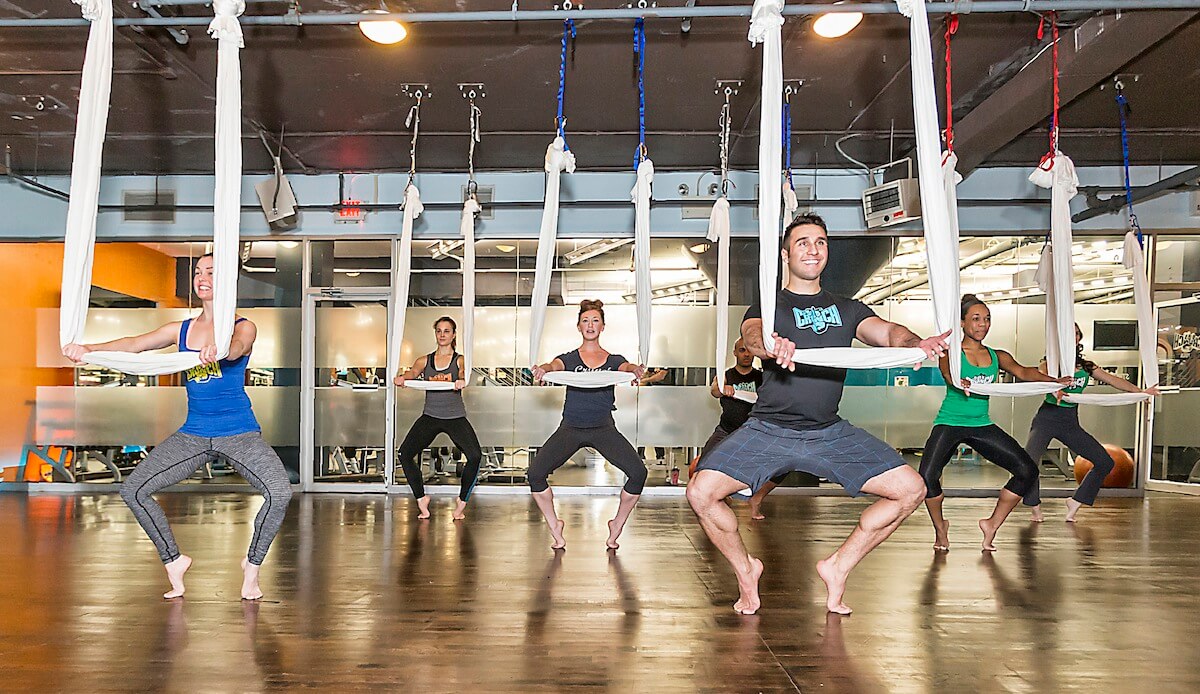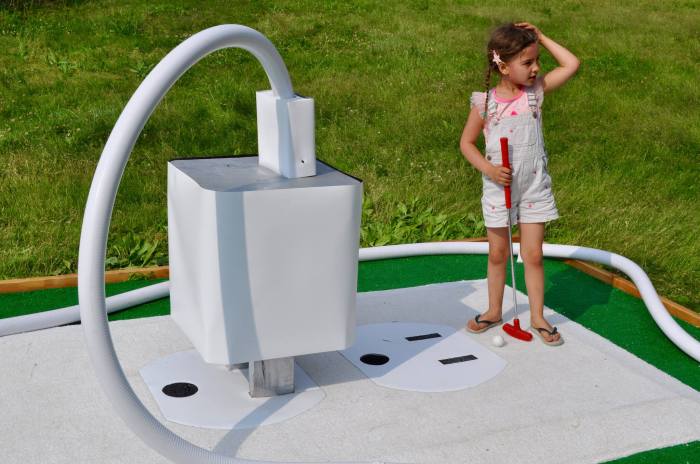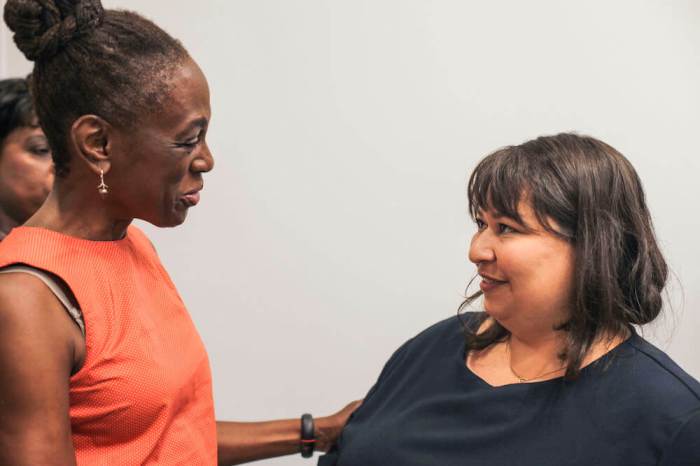Christopher Harrison doesn’t even like to call his latest AntiGravity class a workout.
“Instead of a mindless workout where you’re just adding stress and creating more cortisol in your system, I like to call it ‘mindful playtime’ because your body and mind are reconnecting,” he says. Led by specially trained instructors using the Harrison hammock, which he calls “your dance partner,” AntiGravity AIRbarre is so safe and easy on the joints that even his mother can do it — in her 70s with two replaced hips. The routines are newbie friendly: Only pregnant women and those with heart disease, glaucoma or recent surgeries can’t take part.
To create the workout, now at Crunch in the Bowery, Harrison fused his Broadway career with the mindset of yoga and the movements of ballet (“so great for conditioning your legs”). “A regular barre is stationary — here you’re required to use different muscles and to challenge your body in new ways; you’re working in all three dimensions in space,” he explains.
Inside the Workout: AntiGravity AIRbarre
Let’s be real: Anyone who’s fallen out of a hammock is going to be a little wary walking into a studio full of them hanging from the ceiling. The height is adjusted by the instructor for each student, so arrive about 15 minutes early. The steps are all carefully explained, and once you take a deep breath and allow yourself to tumble backward into your first inversion, it’s not uncommon to giggle. You’re upside down and there aren’t monkey bars digging into the backs of your knees, and your weight isn’t pushing on your head and neck! After that, imagine moments of yoga zen mixed with the physical exertion of a cardio workout. Did ballet when you were little? It comes back as you work through plies, deep releves and stretches.
You’re also realizing that traditional barre workouts don’t really work your upper body, but having a moving barre does — the jumps and chorus line kicks are as much about sculpting longer, leaner legs as using your arms and shoulders to stabilize the movements. The next day, I felt the workout not just in my butt and backs of my legs, but my biceps and triceps. Bottom line: Be patient with yourself the first time — you’re finding a new center of balance as well as learning to use a new piece of equipment. Previous ballet experience is a good preview, but around the time you’re using your arms to pirouette as much as your legs, you realize how much you’d relied on momentum to carry you along. If you measure a workout by sweat, this isn’t going to impress you, though it claims to burn up to 650 calories per class. But for sheer enjoyment, the entire session is a giddy rush (and not just of blood to the head).
Beyond ballet: AntiGravity AIRbarre turns hanging out into working out

Crunch


















